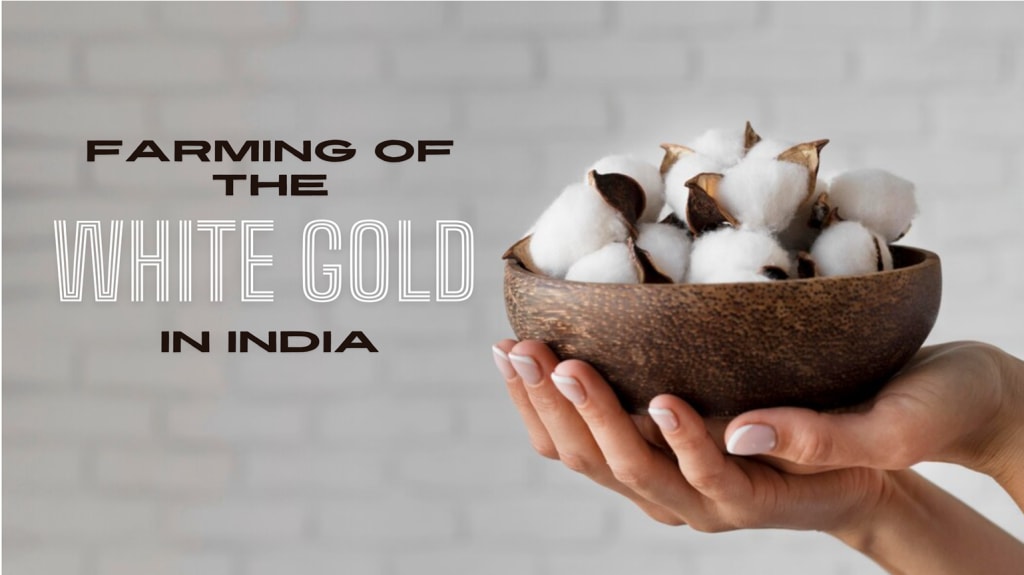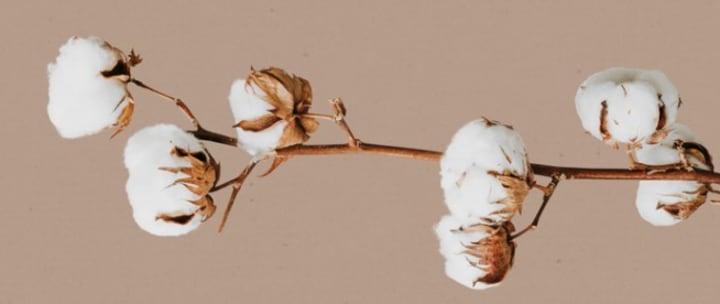
Cotton is more than simply a crop. It's a gem in India! Cotton is widely known as “White Gold” in India because it plays a crucial role in economic development. It is a valuable agricultural crop because it is closely linked to national economies and histories.
Cotton is the only fibre that is used in the creation of fabric. However, its fibre is also used for a wide range of other textile purposes, from home furnishing items to healthcare items. India has a long and well-known history of cotton growing, and it still contributes significantly to global cotton production.
Cotton: The Cash Crop
Since cotton is a cash crop, it is sold directly to consumers for a profit. Cotton has the possibility for higher profits when compared to certain existing crops, particularly with strong yields and market pricing. The country's economy grows from the significant foreign exchange that cotton exports provide. India exports a lot of cotton, and a strong cotton sector helps maintain a healthy trade balance.
The ‘White Gold” Farming Journey
In India, most people love to wear white cotton T-shirts because of its comforts and softness. But they have yet to learn how they turned into shirts from fields. The key lies with India, the world's leading producer of cotton! Set off on an exploration of the interesting world of Indian cotton cultivation.
We will look into every step of the process, from sowing tiny seeds to gathering down fluffy bolls, and find out why cotton is rightfully dubbed "White Gold." Furthermore, we’ll explore cotton farming's financial importance for individual farmers as well as the country at large throughout the journey.
Planting and Cultivation
The planting of cotton is largely determined by season. The best time of year depends on how much rain falls in various places. The majority of farmers in India look forward to the monsoon season, which falls between June and September and is marked by rain. Now is the best time to plant because of the abundant rainfall, which acts as a huge watering can for dehydrated cotton seeds, providing them with the ideal start in life!
1. Land Preparation
Farmers start working a few weeks before planting. Tractors, which are frequently the backbones of big farms, are used for the initial stage of deep ploughing. Because of their mobility, farmers can consider Kubota mu4501 for ploughing. Research the Kubota MU4501 price to see if it aligns with your budget. Loosening the soil to a depth of no more than 15 cm allows for proper drainage and root development for the cotton plants.
After that, clumps are broken up, and a smooth, fluffy seedbed is created and ready for planting using harrows or tillers, which are similar to large rakes. Planting raised beds can help in drainage and weed management, and in some places, they can be made using tractors equipped with ridging equipment.
2. Sowing
Cotton is seeded by dibbling (it is a process of putting seeds in the holes of the seedbed and then closing them with soil) or with a seed drill pulled by a tractor or bullock. In rainfed places, it's common to hand-dibble seeds at the specified spacing, especially for hybrids. This technique saves seeds while guaranteeing consistent shape and a suitable plant stand. This is now the primary method for hybrid seeding. Cotton is grown on elevated strips that cut across slopes, which increases output, conserves more water, and lessens soil erosion.
3. Care Practices (Irrigation, Weeding, and Pest Control)
Once the seedlings start appearing, irrigation is required, especially in regions with less rainfall. To make sure the plants don't get dehydrated. To tackle this, farmers may utilise drip irrigation methods, wells, or canals to supply water directly to the roots.

The fight against weeds is up next! These unwanted visitors fight for nutrition and water. Cotton plants remain the main attraction, whether weeds are removed manually or with the help of specialised equipment.
Finally, diseases and other pests can still affect cotton. To reduce the chances of pests and keep these risks at bay, farmers can use a variety of pest management techniques, including organic sprays, natural predators, and occasionally carefully chosen pesticides. By giving their cotton crop the right attention, farmers cultivate it and create the conditions for an ample harvest.
4. It’s Harvest Time!
The right time for cotton harvesting is when cotton bolls split apart to expose fluffy white fibres! To ensure the highest quality, select only the completely opened bolls by hand with a basket. Don't pick green bolls or force partially opened ones, as this may cause the fibres to become immature and lower the quality. To extract the cotton without damaging the priceless fibres, gently twist and pull the open boll. Continue until your basket is full of cotton!
Conclusion
In the end, from the delicate preparation of the land to the satisfying harvest, the path of "White Gold" is an interesting one. Both old and current cotton farming methods used in India are essential to the world textile industry. Despite difficulties, innovative and sustainable practices guarantee the ongoing profitability of this valuable crop. Thus, the next time you wear a cotton shirt, keep in mind the skill and commitment that went into creating India's "White Gold."
About the Creator
Rajendra_Singh
I'm a agriculture blogger, who loves sharing my knowledge about growing things. On my blog, you'll find practical tips and interesting stories to help you get started!
Enjoyed the story? Support the Creator.
Subscribe for free to receive all their stories in your feed. You could also pledge your support or give them a one-off tip, letting them know you appreciate their work.






Comments
There are no comments for this story
Be the first to respond and start the conversation.